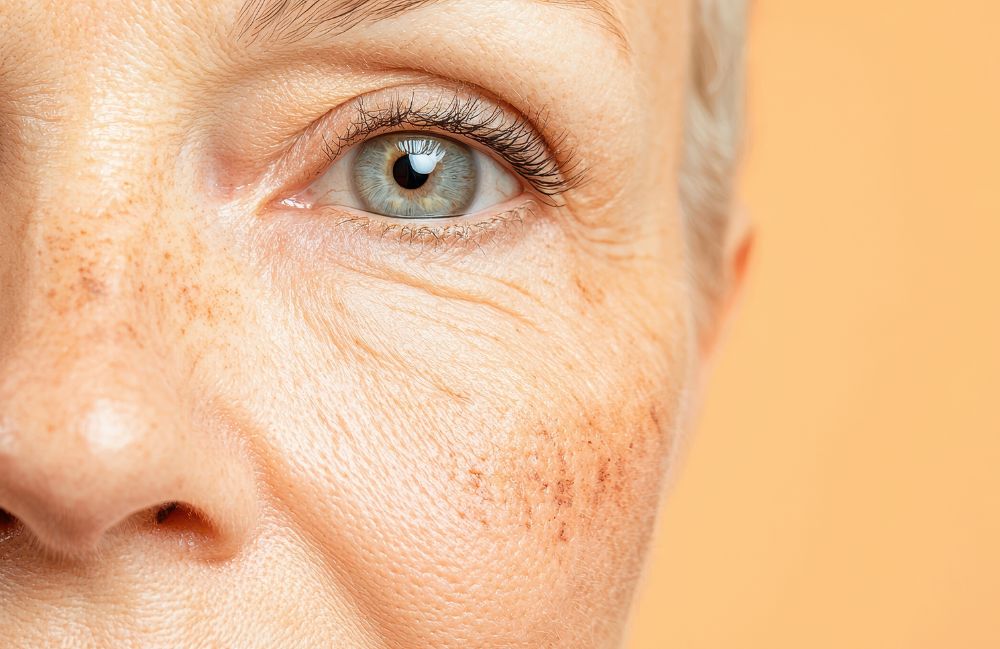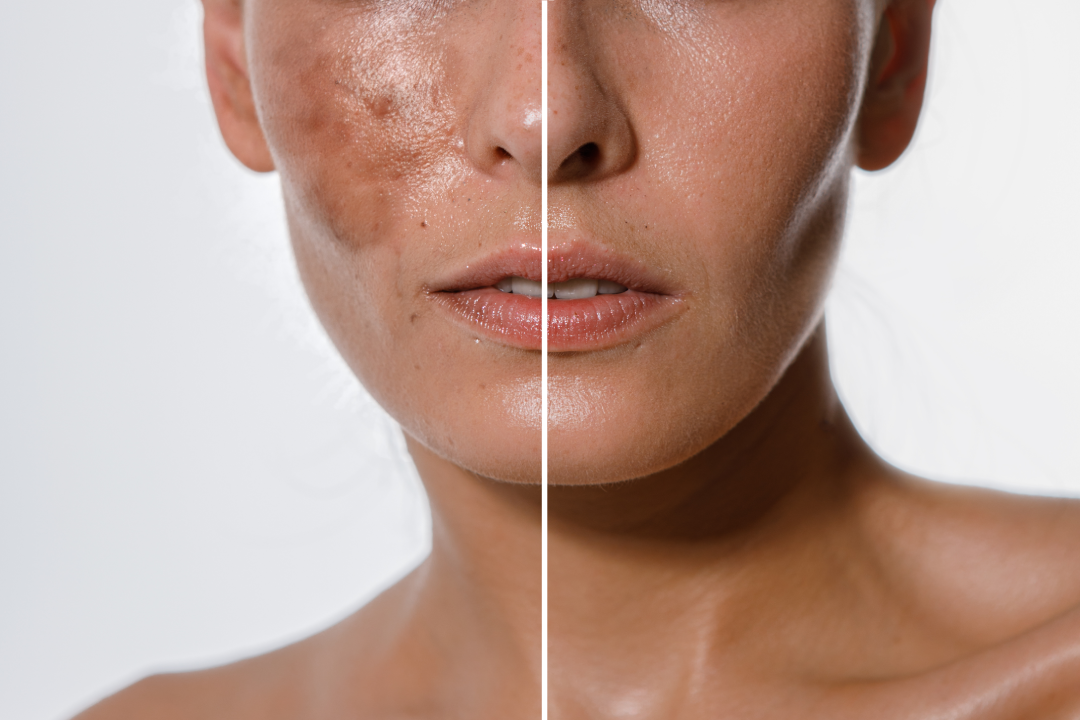
What Are Sunspots?
Sunspots are areas of hyperpigmentation resulting from prolonged exposure to ultraviolet (UV) radiation. They are more common in individuals over the age of 40, but can also appear in younger people who spend significant time in the sun. Unlike freckles, which can fade with reduced sun exposure, sunspots tend to persist and may even darken over time.
Causes of Sunspots
The primary cause of sunspots is cumulative sun exposure. UV radiation accelerates the production of melanin, the pigment responsible for skin color, leading to the formation of these dark spots. Factors that increase the likelihood of developing sunspots include:
- Age: As skin ages, its ability to repair UV damage diminishes, making sunspots more prevalent.
- Skin Type: Individuals with lighter skin tones are more susceptible to sun-induced pigmentation changes.
- Genetics: A family history of sunspots can increase one’s propensity to develop them.
Sunspot Treatment Options
Chemical Peels (Exfoliation & Pigment Reduction):
Chemical peels use exfoliating acids to remove damaged skin layers and lighten hyperpigmentation. Lighter peels help fade superficial sunspots, while deeper peels provide more dramatic brightening by targeting pigmentation at a deeper level. This treatment promotes even skin tone and smoother texture, with noticeable improvements after a series of sessions.
Laser Therapy (Targeted Pigment Removal):
We offer advanced laser treatments that effectively break down excess melanin in sunspots, leading to their gradual fading.
- Clarity II: A dual-wavelength laser that targets pigmentation while improving overall skin tone. This treatment is ideal for light to moderate sun damage.
- eCO2 Laser: A fractional CO2 laser that removes damaged skin layers and stimulates new cell growth, improving sunspots, fine lines, and skin texture.
- Alma Hybrid: Combines ablative CO2 laser resurfacing with non-ablative rejuvenation for precise sunspot removal and enhanced skin renewal.
- DermaV: A vascular and pigment-targeting laser that effectively treats sunspots, redness, and discoloration, making it ideal for patients with both pigmentation and uneven skin tone.
Cryotherapy (Freezing Sunspots for Removal):
Cryotherapy involves applying liquid nitrogen to the sunspot, causing the darkened skin to freeze and peel away over time. This treatment is especially effective for isolated, stubborn sunspots and requires minimal downtime. The treated area may temporarily darken before gradually lightening to reveal new, healthy skin.

FAQs
Are sunspots the same as freckles?
No, sunspots are caused by long-term sun exposure and tend to be permanent, while freckles are genetic and may fade with reduced sun exposure.
Can sunspots turn into skin cancer?
Sunspots themselves are not cancerous, but excessive sun exposure increases the risk of skin cancer. If a sunspot changes in size, shape, or color, it should be evaluated by a dermatologist.
What is the best way to get rid of sunspots?
The most effective treatments include laser therapy, chemical peels, cryotherapy, and prescription skin-lightening agents. The best option depends on your skin type and severity of sun damage.
How long does it take to see results from sunspot treatments?
Results vary based on the treatment used. Some patients see improvement within a few weeks, while laser and chemical peel treatments may require multiple sessions for full results.
Can I remove sunspots at home?
Over-the-counter products with vitamin C, retinol, or hydroquinone may help lighten mild sunspots, but professional treatments offer faster and more effective results.
Do sunspots come back after treatment?
Treated sunspots may fade permanently, but new ones can form with continued sun exposure. Wearing sunscreen daily and taking preventive measures can help maintain results.
What is the best sunscreen for preventing sunspots?
A broad-spectrum sunscreen with SPF 30 or higher is ideal. Look for products with zinc oxide, titanium dioxide, or antioxidants like vitamin C for added protection.
Hear from
Real Patients

Schedule Your Consultation Today!
If you want to reduce the appearance of sunspots and prevent future sun damage, professional dermatological treatments can help restore clear, even-toned skin. At Metropolis Dermatology in Costa Mesa, CA, we offer laser therapy, chemical peels, and customized skin treatments to eliminate sunspots effectively. Schedule a consultation today to explore your treatment options!
